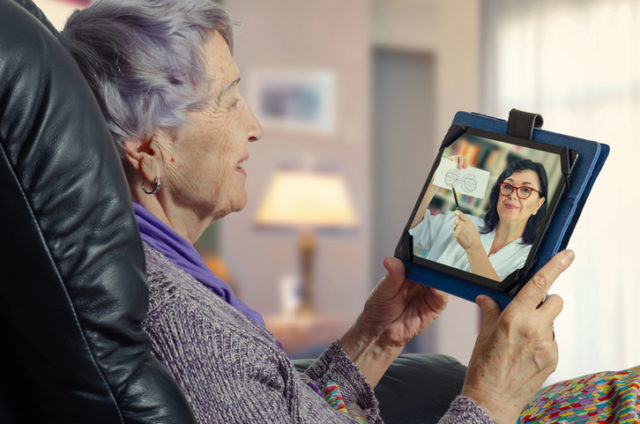
One day, before the Covid-19 pandemic, Christina Farr saw her elderly, and usually rather isolated, neighbor dressed up in a suit and on his way out of the house. Curious, the former journalist and current principal of OMERS Ventures, asked him where he was off to. His answer? The doctor.
Farr relayed this memory on Monday at a panel exploring the future of virtual care at the MedCity INVEST conference. This incident brings to light a key perspective as providers digitize the care journey: patient preference is not a monolith.
Contrary to the popular belief that patients view in-person visits as a burden, Farr’s neighbor, like many others, may still enjoy going to the doctor and see it as an occasion for social interaction.
The future of healthcare delivery isn’t telehealth alone, but rather a blended model, where patient preference guides the way, said Dr. Ami Bhatt, director of outpatient and telecardiology at Boston-based Massachusetts General Hospital, during the panel.
“For any given patient…there is a situation in which it is better or more convenient for them to be home,” she said.”[And] there’s a situation in which they’re going to want to come in.”
Providers need to become more agile and pivot care delivery to what is ultimately best for the patient, she added.
In fact, in some cases, what may be best for a patient is having health workers in their homes during a virtual visit.
Certain patient populations need an extra layer of support and in-person care may prevent clinicians from viewing the full spectrum of their patients’ needs, said Dr. Toyin Ajayi, co-founder and chief health officer at Cityblock Health, a startup that provides primary care services to marginalized populations, including Medicaid patients and those eligible for both Medicare and Medicaid.
Though physicians can provide an antidote to loneliness through in-person care for the elderly — as in the case of Farr’s neighbor — it may not help them address their patients’ other needs, she said at the conference.
“Particularly in geriatrics, we know that when your neighbor puts on his suit and goes out to see the doctor and sits in the office and says ‘yes, everything is fine, things are great, I feel wonderful’ — we have no visibility into the fact that maybe his house is cluttered and he is at risk for falling,” Ajayi said.
“What he needs is a longitudinal relationship that is anchored in meeting him where he is, and that includes meeting him in his home,” she added.
Care for the elderly and other high-need populations may be best when a community health worker can go into the patient’s home, conduct a full psychosocial evaluation and then facilitate a physician visit, Ajayi said. When the physician asks questions about the patient’s medications or nutrition, the health worker can actually go look and help the physician determine the best course of treatment.
Going forward, the healthcare industry will need to innovate with these longitudinal relationships in mind, Ajayi said.
Today, numerous on-demand healthcare services exist which support episodic care. But patients with multiple health and social needs require a comprehensive care strategy, involving a network of caregivers and delivery options, so they can get the care they need in the way that suits them best.
Photo: verbaska_studio, Getty Images








